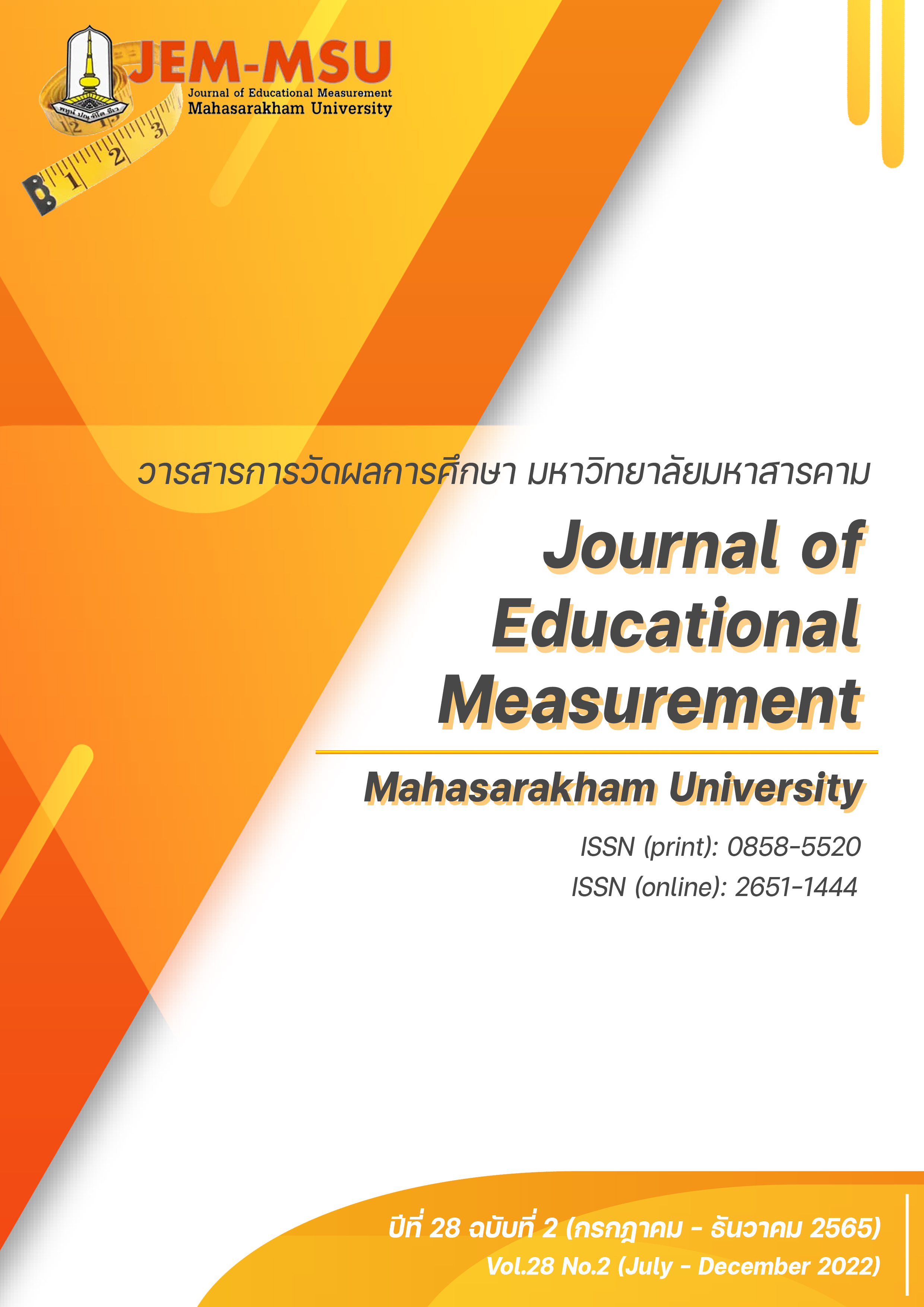The Blended Learning Model by Applying Empowerment for Nakhon Ratchasima Rajabhat University Teaching Staff
Main Article Content
Abstract
The objectives of the research entitled the Blended Learning Model by Applying Empowerment for Nakhon Ratchasima Rajabhat University Teaching Staff were to study the problems, conditions and needs for a blended learning model of the teaching staff, to develop a blended learning model by applying empowerment, to try out the blended learning model, and to assess the blended learning model. The application of empowerment was divided into 4 steps. Step 1 dealt with a study on the problems, conditions and needs for the blended learning model. The sample consisted of 70 teaching staffers, obtained by stratified random sampling; interviewing 15 teaching staffers and 4 informants who were purposively sampled. The instruments were a questionnaire and an unstructured interview form. Step 2 dealt with the blended learning model development, having 8 experts to criticize the model. The research instrument was the blended learning model. Step 3 dealt with the tryout of the model. The sample consisted of 24 NRRU teaching staffers, obtained by disproportionate stratified sampling. The informants were 528 students who were in the classes taught by the sampled teaching staffers. The teaching staffers selected the experimental group by using cluster sampling. The research instruments were the blended learning model and an effectiveness evaluation form. Step 4 dealt with assessment of the blended learning model. The sample consisted of 30 teaching staffers who taught general education courses, obtained by disproportionate stratified sampling, using the faculty as the stratum. The research instrument was the blended learning model with application of empowerment for Nakhon Ratchasima Rajabhat University teaching staff, and an assessment form to assess usefulness, possibility, suitability, and correctness. The analysis of data employed the mean (), standard deviation (S.D.), t-test, content analysis, inductive conclusion and consensus.
The research results showed that:
1. The teaching staffers lacked knowledge and understanding of the blended learning design and the COVID-19 situation had caused obstacles in teaching. The state of organizing for blended learning had the overall average at the moderate level, but the teaching staffers' need for blended learning had the average at the highest level. When comparing the average need for blended learning with the 70 percent criterion, on the whole and on each aspect, it was found that the mean of the need for blended learning was significantly higher than the 70 percent threshold at the .05 level.
2. The overall effectiveness assessment of the blended learning model revealed the average score of effectiveness at a high level, which was above the 70% threshold, with statistical significance at the .05 level, and the students’ achievement evaluation in general education courses revealed that the academic achievements of 426 students, or 80.68%, were higher than the 70% criteria. The teaching staff and students had their satisfaction with using the blended learning model higher than the 70 percent threshold, with statistical significance at the .05 level.
Article Details

This work is licensed under a Creative Commons Attribution-NonCommercial-NoDerivatives 4.0 International License.
The content and information contained in the published article in the Journal of Educational Measurement Mahasarakham University represent the opinions and responsibilities of the authors directly. The editorial board of the journal is not necessarily in agreement with or responsible for any of the content.
The articles, data, content, images, etc. that have been published in the Journal of Educational Measurement Mahasarakham University are copyrighted by the journal. If any individual or organization wishes to reproduce or perform any actions involving the entirety or any part of the content, they must obtain written permission from the Journal of Educational Measurement Mahasarakham University.
References
Driscoll, M. (2002). Blended learning: Let's get beyond the hype. LTI Newsline: Learning & Training Innovation. http://elearningmag.com/ltimagazine/article/articleDetail.jsp?id=11755.
Fetterman, D. M. (1997). “Empowerment Evaluation and Accreditation in Higher Education” in Evaluation for the 21st. Century: A Handbook. Editors by Chelimsky. E and Shadish. W. R. Sage Publication, 981-395.
Gibson. (1993). A study of empowerment in mother of chronically in children (p.113), Boston college. 23.
Chantem, S., (2010). Development of a blended teaching and learning model: An introductory computer course for undergraduate students, [Doctoral thesis]. King Mongkut's University of Technology North Bangkok. (in Thai)
Paichamnan. A. et al. (2013). Development of a blended teaching and learning model in educational technology and innovation: courses for graduate certificate student’s teacher profession Yala Islamic University [Master’s thesis]. Prince of Songkla University. (in Thai)
Pensirinapa. N. (2002). Handbook of Empowerment Training in Health Promotion. n.p. (in Thai)
Rakbumrung. T. (2012). Blended-learning. Journal of Education, Maha Sarakham Rajabhat University, 1(16), 31-40. (in Thai)
Ruangrong, P. et al. (2014). Technology Education with Thai Teachers in the 21st Century. Panyapiwat Journal, 5(May), 195-205. (in Thai)
Wanpirun. P. (2011). Blended learning from theory to practice. Journal of Vocational and Technical Education. Vocational Technology Research Center Science and Technology. Research Office King Mongkut's University of Technology North Bangkok. (in Thai)


